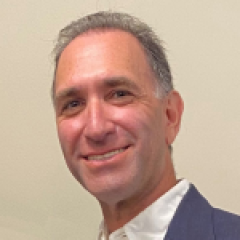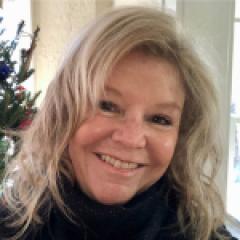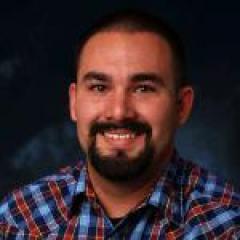
At Seaside High School in California, teacher Brady Hollis points to the screen as student De Von Robinson looks on in 2018. Teacher Terri Pipes is in the background. (Courtesy of Seaside High School)
Seaside, Calif., boasts a high school where the students — most of whom are economically disadvantaged — receive strong academic and social supports that allow them to learn and progress academically, placing the school at the center of its community. Seaside High School is one of the 2017 winners of the “Schools of Opportunity” project, which recognizes public high schools that work to close opportunity gaps by creating learning environments that reach every student.
The Schools of Opportunity project started in 2014 as a pilot in New York and Colorado and went national in 2015-16. Several dozen schools have been honored in the program, which assesses a range of factors, including how well the adults in a school building provide health and psychological support for students, as well as judicious and fair discipline policies and a broad and enriched curriculum. (See the criteria graphic below.)
This piece on Seaside was co-written by Kevin Welner, a founder of the Schools of Opportunity project, director of the National Education Policy Center at the University of Colorado at Boulder, and a professor specializing in educational policy and law. The other authors of this piece are Linda Molner Kelley, former assistant dean of teacher education and partnerships and director for outreach and engagement at the University of Colorado at Boulder; Adam York, an NEPC research associate and Schools of Opportunity project manager; and Matt Garcia, a doctoral student in the School of Education at the University of Colorado at Boulder.
The Seaside school is one of six “gold” winners in the 2017 Schools of Opportunity cycle. The others are Chicago High School for Agricultural Sciences, Lincoln High School in Nebraska, Denver South High, Broome Street Academy Charter High School in New York City and Health Sciences High and Middle College in San Diego. The two silver Schools of Opportunity for 2017 are Hammond High School in Columbia, Md., and William C. Hinkley High School in Aurora, Colo.

(National Education Policy Center)
By Kevin Welner, Linda Molner Kelley, Matt Garcia and Adam York
Seaside High School in Seaside, Calif.
- Enrollment: 1,108
- Principal: Carlos Moran
- Superintendent: PK Diffenbaugh
- Economically Disadvantaged Students: 74 percent
Earlier this year, we released a two-minute video (see below) that told the story of how students benefit when they have access to much-needed educational and social supports. The video introduces us to Dayshaun Davis, a young man whose drop in school performance might, at many high schools, have resulted in sanctions and lowered expectations.
But that’s not what happened at California’s Seaside High School, where a system of supports helped him get through the immense challenge of his mother falling ill. The school was able to provide personal relationships with adults and wraparound services that helped him became a school leader. This year he graduated and matriculated to a four-year university.
The strong supports at Seaside High School allow teachers to push and challenge the students. There are no low-track classes. In fact, when faced with disappointing test scores in math, the school resisted creating a lower-track class with lowered expectations. Instead, the school’s educators created team-taught classes combining coding and robotics, with students heterogeneously grouped.
Similarly, when working with ideas for including career-focused content, the school thoughtfully paired career pathway courses with rigorous college-prep coursework for all students. Students experience curriculum that seamlessly melds college readiness and career preparation. This stands as an alternative to the ugly history in the United States of using vocational — now called career and technical — courses as low-track classes for students of color and others deemed “not college material.”
About three-quarters of the Seaside student population qualifies for free- or reduced-price lunch. About two-thirds of the school’s students are Hispanic. Among these students are many whose first language is other than English, and these students are an important part of Seaside’s commitment to inclusion.
The school’s educators believe that all teachers are teachers of language, regardless of content area. They also see linguistically diverse students as having a strength — an asset — that should be valued and build upon. All teachers are expected to undergo language fluency training, where they learn to employ language scaffolds and tools to help linguistically diverse students meet the high expectations placed on all the school’s students.
Similarly, students with special needs are actively involved in all aspects of academic and social life at Seaside High. Inclusion into the general education curriculum is the norm at Seaside. All teachers are made aware of Individualized Education Program designations for special education students as well as accommodations and modifications.
Students with more severe special needs participate in Community-Based Instruction, where students are taught transferrable skills that will help them transition to successful postsecondary life. But these students also merge with the general population for part of the school day.
The school offers over 15 Advanced Placement (AP) courses on campus and doubled AP enrollment over a two-year span. In the four core content areas, all students take courses that are high level (University of California eligible). The school, as part of the New Tech Network, works to help underrepresented and low-resourced students navigate the technological landscape, emphasizing project-based learning.
Seaside is a school at the heart of its community. The school values the diversity and knowledge base that students and their families bring to the community. For example, the school hosts events to build and support community among students with special needs. Seaside is also committed to valuing parents as important partners in student learning. Parents actively influence the practices at Seaside through involvement in advisory groups like the Parent Institute for Quality Education and the English Language Advisory Committee.
Schools like Seaside High School show us that a strong commitment to inclusion — where all students get the opportunity to a high-quality education — can foster an even stronger community. The school also illustrates the value of engaging students in authentic, deep, meaningful learning experiences. We are honored to recognize Seaside as a Gold School of Opportunity.
Here are stories on the other seven winners in the last Schools of Opportunity cycle:
If you don’t know what a community school is, you should. Take a look at this one.
Down on the farm, these Chicago high school students get a unique public education
At this school, being ‘different’ is an asset
This school once had a reputation for violence. Here’s how that changed.
How one Maryland high school successfully boosted minority student enrollment in advanced classes
At this school, the inclusive culture matters as much as the curriculum
Schools of Opportunity from Schools of Opportunity on Vimeo.




